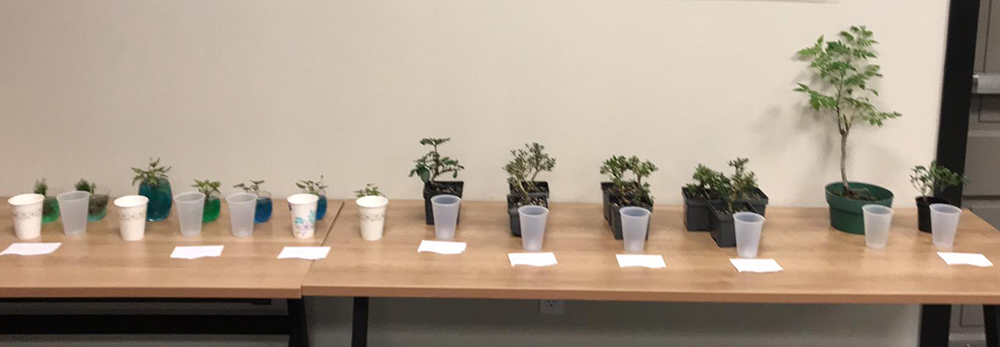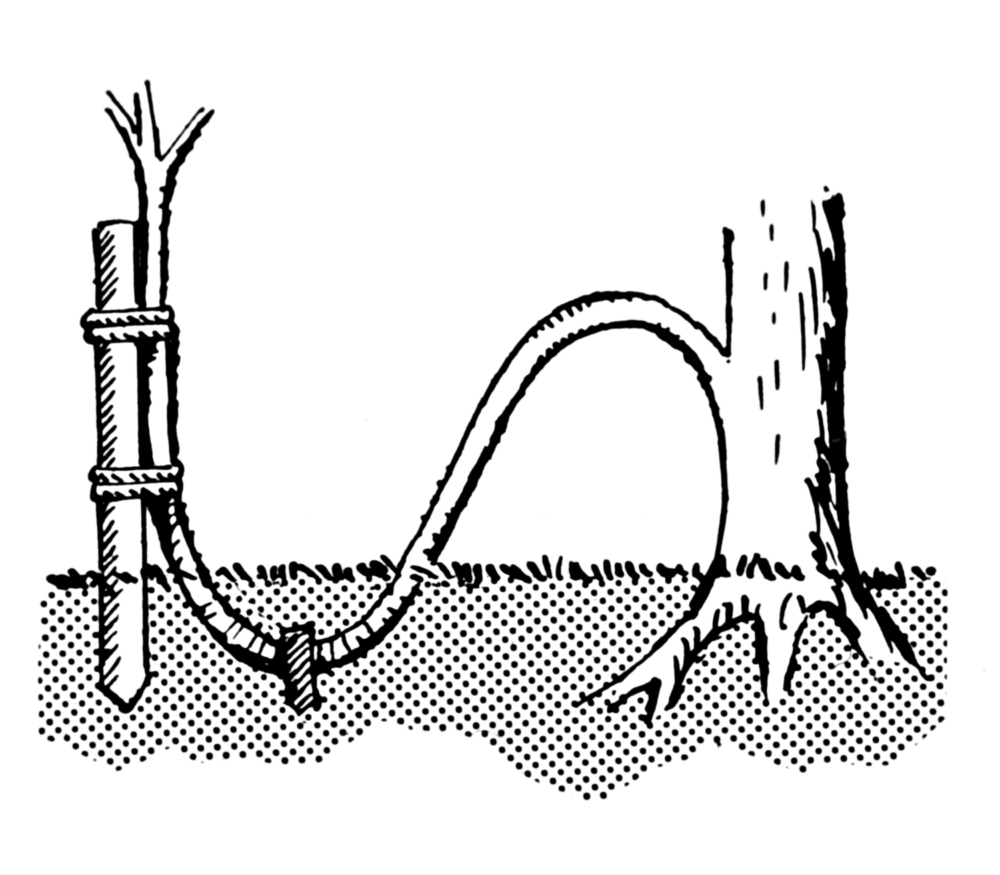A step-by-step guide for taking a tree from nursery pot to bonsai pot
1. These activities should take place in early Spring before leaves open. Remove the plant from
the nursery pot. ( have ant spray nearby just in case)
2. Rake away the topsoil to expose surface roots. (use a water hose if necessary)
3. Determine the front of the tree according to best root exposure, the slant of the trunk, and the position of 1st and 2nd branches.
4. Decide on a style, taking into consideration the type of tree, natural growth style, movement of
trunk, and taper.
5. Remove extraneous branches working from the bottom up. (keep roots wet or replace tree
into pot.)
6. When you have a rough idea of the style and height of the tree, make a sketch of your desired
finished product. (Or find a picture of a tree that you want this one to look like.)
7. Decide on final height based on girth and taper of the tree. If necessary, cut the top and make new
apex, or leave excess top growth for future jin (conifers).
8. Begin fine pruning. Remove branches growing up or down, branches inside of a curve, inside
of a branch crotch, forks with more than 2 branches, bar branches, and branches with girth exceeding 1st and 2nd branches. (it is better to leave too many branches than to over-prune.
More can be removed later. If a conifer, leave some stumps for jin instead of cutting off flush (with trunk)
9. Wire branches to give the appearance of age. Guidelines: if the trunk is straight, limbs should be
straight; if trunk has movement, then limbs should be wired with movement.
The following steps pertain to most deciduous trees, but do not work conifer roots the same year
that major work is done on branches.
10. Begin shaping rootball. Slope it downward in all directions from base with rake and snippers.
11. Cut off bottom of rootball between 1/3 – 2/3 of total mass, depending on species, being
careful to keep a number of white-tipped roots if possible. Use high pressure water hose to
remove soil from root mass if desired.
12. Trim away any unsightly roots on surface including any crossing roots or roots sticking up.
13. Soak rootball in a water while you prepare pot.
14. Select a proper pot for the tree, either a plastic grow pot or an oversized bonsai pot. It is best to over-pot the tree at first (use a pot larger than needed) and then reduce roots more in 2 years and put the tree in a smaller pot.
15. Secure screen in bottom of pot and run a ‘securing’ wire or twine through the holes in bottom of pot.
16. Add a coarse bonsai mix to bottom of pot making a mound where the base of tree will sit.
Add a handful of the original soil in case the tree uses mycorrhiza. Immature trees that need
to grow should be in coarser mix. As the tree matures, the particle size of the mix should decrease.
17. If using a bonsai pot, position tree in pot according to proper front, height, and ‘off-centering’ guidelines (1/3 – 2/3 off center for oval and rectangle pots).
18. Secure tree with wire or twine, preferably where it doesn’t show, behind the trunk. Use tubing on any part of wire that is in contact with surface roots.
19. Add dry soil mix and use chopsticks to work it down into and around the roots. Do not rush this process.
20. Continue adding soil mix to about ½ inch below rim of pot.
21. Cover surface with chopped sphagnum moss for moisture retention. If using green moss, add
a layer of fine powdery soil under moss to help it take root. Use moss sparingly.
22. Soak tree in water for at least 5 minutes to wet soil particles, and mist foliage with sprayer.
23. Wipe off pot and place tree out of direct sun or wind for about 2 weeks. Water sparingly until new roots have time to form.
25. If tree is immature and needs to grow, begin fertilizing after 2-3 weeks with an inorganic fertilizer. If tree looks mature and you don’t want it to grow strongly, wait until the end
of May and begin fertilizing with weaker organic fertilizer.


